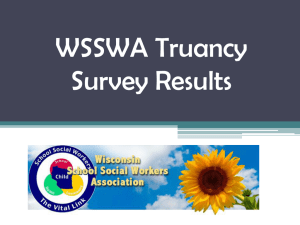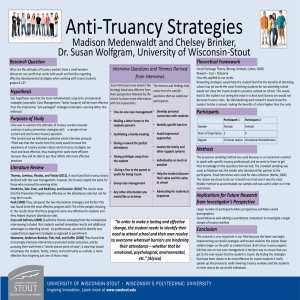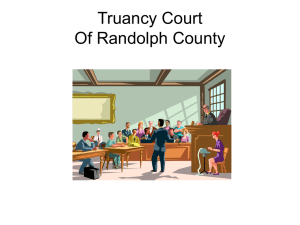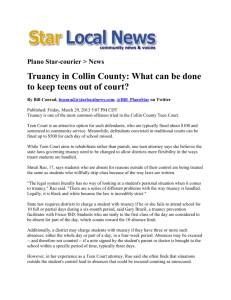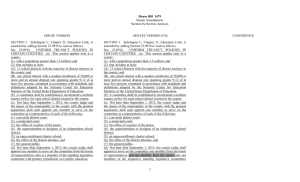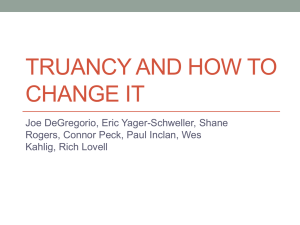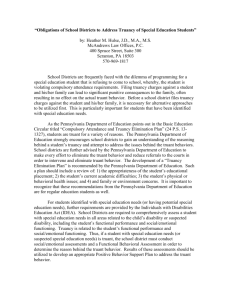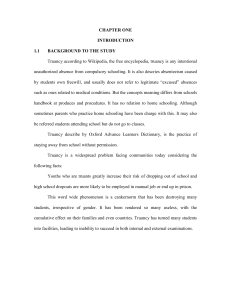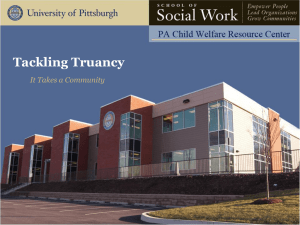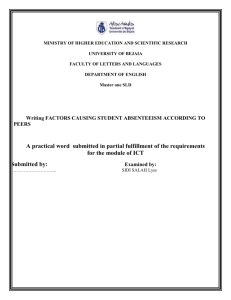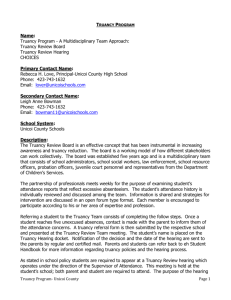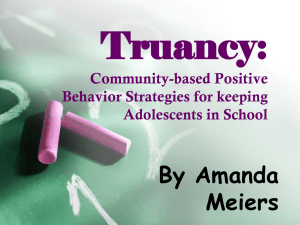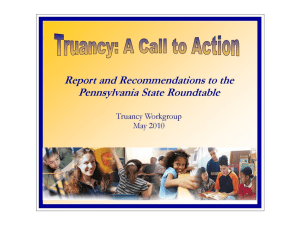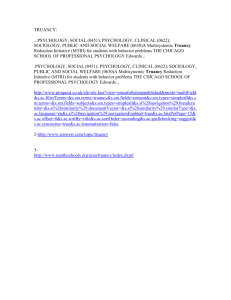Campbell-County-Status-Project-for-Task-Force
advertisement
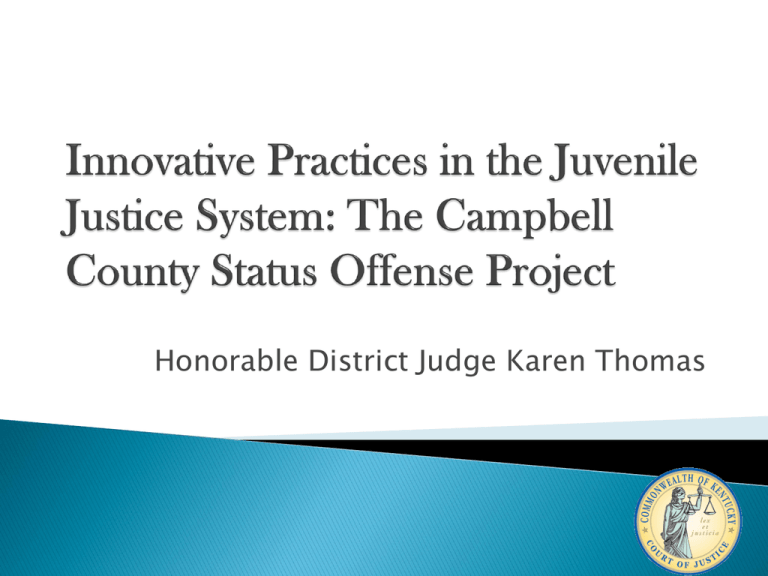
Honorable District Judge Karen Thomas These are not “bad kids.” They are kids who need: • Treatment • Community support • Detention isn’t the answer reclaimingfutures.org Beyond Reasonable Control of Parent or School and Habitual Truancy are included in the top three offenses that are charged against youth each year. Nine truancy diversion programs were put in place over the last several years to address the habitual truancy charges. What’s it about? Early intervention ◦ Team approach ◦ Referral is made when child has 3 unexcused days School personnel, court personnel, and community partners. Underlying issues of truancy are addressed. Statewide- the total number of truancy cases referred to the TDP was 8,296 and of those 533 youth were charged with habitual truancy (i.e. they continued to miss school). Campbell Co.- the total number of truancy cases referred to the TDP was 483 and of those 48 (10 %) had habitual truancy filed. Habitual Truancy complaints are still going down, attendance numbers are still going up. Beyond control of parent and beyond control of school cases are multi-faceted and often involve multiple agencies within the community – much like truancy. Enhanced intervention is needed in the precourt stage where case management and multidisciplinary consultation could be fully utilized. Campbell County court staff and community stake holders have partnered with DBHDID to integrate pieces of the Reclaiming Futures model to improve outcomes for pre-court or diverted youth through a policy academy grant. The Reclaiming Futures model unites juvenile courts, probation, adolescent substance abuse treatment, and the community to reclaim youth. Step one: Provide a screening to youth to direct the family to services before a complaint is filed. (CDWs currently use the Global Appraisal of Individual Needs – Short Screener) Step Two: If complaint is processed a preliminary inquiry takes place with the CDW and the case is presented to a Site Review Team for consultation where treatment is further engaged if necessary. Step three: aggregate data, trends, and concerns will be communicated to a Change Agent Team on a quarterly basis for consideration and potential policy changes. All of this will take place before formal court involvement. Since March 7th 2012, 48 families have sought a pre-complaint conference with the Court Designated Worker to file a beyond control of parent or habitual runaway complaint (no beyond control of school in this time frame). Of the 48 families only 8 have returned to file a formal complaint after getting screened for mental health and referred to services in the local community via the pre-complaint conference. Four children were sent to court per the discretion of the county attorney prior to start of second phase of the project. One charge was withdrawn by the parent. Three were sent to the Site Review Team. Our Site Review Team meeting have included representation from: ◦ ◦ ◦ ◦ ◦ ◦ ◦ ◦ ◦ County Attorney’s office Department of Juvenile Justice Department of Community Based Services Local schools Department of Public Advocacy Children’s law center Northern Kentucky Community Action Community Mental Health The Brighton Center Our first change agent team meeting is scheduled for Oct 24th, 2012, 3pm. Each year, more than 2 million children, youth, and young adults formally come into contact with the juvenile justice system Of those children, youth, and young adults, (65–70 percent) have at least one diagnosable mental health need, and 20–25 percent have serious emotional issues ◦ Acknowledge and respond to youth’s development, culture, gender, needs and strengths differently—they are not “little adults” ◦ Youth do have strengths and are capable of positive growth when given the appropriate opportunities and supports—Giving up on them is costly to society, investing in them makes sense We need a model that emphasizes improved ways to identify, serve, and treat these multi-system youth, youth who maybe have unidentified and/or untreated trauma, mental illness, substance abuse or other special needs Use of an appropriate screening and assessment instrument can serve as a cost-effective method to identify potential problems and place youth in proper levels of treatment/care and maximize resources. When youth receive treatment, it can be ineffective if it is not an evidence based treatment practice. Most youth in the community who are involved with juvenile justice need supports in order to stay crime free, substance free and engaged in community activities. Juvenile justice and other youth-serving agencies often have difficulty receiving timely and reliable information needed for determining appropriate sanctions, supervision, and services for youth. We need information sharing principles and standards for multiple agency collaborations. We need standards for multiple agency information sharing. Financial mapping of the public funds that are expended on a yearly basis to address juvenile justice issues. This Task Force’s findings can inform the development of a comprehensive financial plan that will coordinate funds in the most efficient and effective ways to assure the provision of coordinated services and supports.
